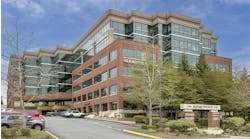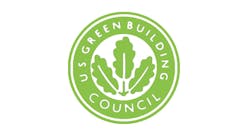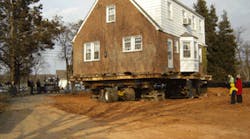SILVER SPRING, MD. — Eco-Estate @ Briggs Chaney, a subdivision outside of the Baltimore-Washington areas, utilized sustainable technologies and products, including a geothermal system and water-efficient plumbing products, in its 10,000 sq. ft. model house, exemplifying that green products and technologies can be cost effective and energy efficient even when used in a large home.
The model house will be the largest of eight homes when all subdivision phases are completed. The subdivision's smaller homes, which will be built in the near future, will range from 6,000-7,000 sq ft. and utilize many of the products and systems installed in the model home. Other sustainable technologies that may be used in future subdivision homes include a green roof, passive solar design, SIP exterior, solar panels and more radiant flooring.
The subdivision is located within Maryland's only designated Specially Protected Area, ensuring low density and protection of natural habitat. Before construction of the model home began, a 1940s Cape Cod home was relocated on the property to preserve it. Since a basement was created for the home's new location, Danfoss LX mats were installed, so the basement would have radiant electric heat. The Cape Cod house will be used as a museum and green community outreach center — vendors will be invited to display their sustainable products and technologies and green events will be presented on an ongoing basis.
Objectives of the subdivision project include building in the natural habitat, using sustainable products and technologies, raising awareness of getting off the grid, and receiving NAHB Green Guard and USGBC LEED certification for the model house.
Geothermal system
Traditional HVAC systems usually consume the most energy in houses, so it was imperative that a cost effective, energy-efficient system was installed.
Dynatemp Inc., Silver Spring, Md., installed two two-stage Envision systems by WaterFurnace Renewable Energy Inc., featuring IntelliZone Comfort Zoning. These two systems were picked for the model house because of energy efficiency and cost effectiveness, according to Tom Hackshaw, president of Dynatemp Inc. The system for the lower level is a package unit and the system for the upper level is a split system. Each system has four subzones, thus, there are eight points of control in the house.
IntelliZone Comfort Zoning System controls each zone by its own space thermostat and damper motor. The comfort zoning monitors the thermostats, puts the system in the proper mode of operation and energizes the correct number of stages of heating or cooling and airflow.
“Multiple points of control allow for control of each level, by automatically portioning the air as the sun moves across the sky, as the wind blows different directions, as people gather for a meal and cook — the system automatically compensates for internal and external influences that are normally lost in a conventional, residential HVAC system,” explained Hackshaw.
The geothermal system's earth loops are a horizontal configuration, installed in the front and rear of the model house, providing full capacity for either Envision system. Horizontal earth loops are used when adequate land surface is available, and pipes are usually placed in trenches, ranging in length from 100-ft. to 400-ft. When the model house needs to be heated, heat from the earth loop will then be distributed through a conventional duct system. In the summer months, the process is reversed to create cool air throughout the home.
According to Hackshaw, installing the geothermal system took no longer than installing a conventional HVAC system for a house of the same size, and doesn't cost any more to install.
“Under the stimulus bill, there is a 30% federal tax credit for the entire system including the earth loops,” said Hackshaw. “In this house, because the earth loops are a horizontal configuration, the stimulus bill pays for more than just the earth loops, making it less expensive to install than conventional HVAC systems and yet costing about 50%-60% less to operate than a conventional, high-efficiency HVAC system. So they get a less expensive system to install and operate.”
The model house also utilizes radiant flooring in the master bathroom and back area, including the kitchen and family room. Danfoss LX mats were the product of choice, offering radiant electric heat.
Water conservation
To conserve water, Kohler products were installed in the model home. The HETs have dual flush, single flush and Pressure Lite flush, which always flushes at 1.0-gpf. The newest Kohler product in the house is the Cimarron Class Six Toilet with a single flush.
Kohler Forté and Purist showerheads and hand showers were also installed to conserve water, along with Kohler lavatory faucets with a 1.5 GPM aerator. The faucets will save 30% more water when compared to standard 2.2 GPM models.
All Kohler lavatory faucets meet the water-saving and performance guidelines set forth by WaterSense. When possible, Kohler cast iron products, which are 93% recycled and reclaimed material, were used.



